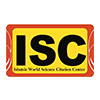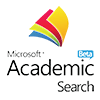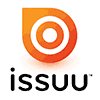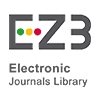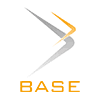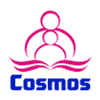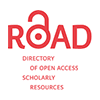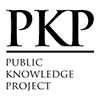Developing an Interesting English Vocabulary Learning Material for Junior High School at Wangi-Wangi
Abstract
This study aims to develop interesting supplementary vocabulary materials for grade 8 junior high school students in Wanci. This is a Research and Development (R&D) with the ADDIE model by Branch & Varank (2009). 82 8th-grade students of SMP Negeri 1 Wangi-Wangi participated in the needs analysis. Then, at the implementation stage, 11 students participated in the small group try-out, and 40 students participated in the field test with a larger sample. Data were collected through interviews and questionnaires and then analyzed quantitatively and qualitatively using descriptive statistics. The results show that the materials developed follow the target students' needs in learning English. Students need structured vocabulary materials with 10-20 words per unit and interactive reading texts to improve comprehension and communication. The classroom environment is the top choice as it supports teacher focus and guidance. Books with attractive displays, animated images, and easy-to-read fonts are preferred, with Arial and Century Schoolbook being the top choices. Animated visuals were more appealing than realistic images, and picture elements helped with vocabulary comprehension. The product test results showed that the developed materials were interesting, suitable for students' needs, and relevant to students' lives. The developed products received positive responses from students and material development experts. With an average score of 3.25-4.00, the book is rated “Very Good” and worthy of being used as additional vocabulary material in the classroom.
Keywords
Full Text:
PDFReferences
Al Kaboody, M. (2023). Review of Schmitt, N., & Schmitt, D.(2020). Vocabulary in language teaching . Cambridge University Press.
Branch, R. M., & Varank, I. (2009). Instructional design: The ADDIE approach (Vol. 722, p. 84). New York: Springer.
Bulan, A., & Idhar, I. (2021). Developing Noun Words Domino Card (NWDC) Learning Media to Improve English Vocabulary Mastery of Junior High School Students. VELES Voices of English Language Education Society. http://orcid.org/0000-0002-2886-6020
Domingo, D.M., & Aguillon, H.J. (2021). Perceived Role of Social Media in the Vocabulary Development of University Students. Applied Linguistics, Linguistics, and Literature (ALLURE) Journal https://doi.org/10.26877/allure.v1i1.9269
Graves, Kathleen. 2001. Designing Language Courses: A Guide for Teachers. Boston: Heinle & Heinle Publishers.
Hutchinson, T., & Waters, A. (1987). English for specific purposes. Cambridge university press.
Indriani, S., Suteja, H., Listiani, T., & Seleky, J.S. (2023). Interactive Vocabulary Learning through VCR (Vocabulary in Contexts and Repetitions) Strategy. Prosiding Konferensi Nasional Pengabdian Kepada Masyarakat dan Corporate 102Social Responsibility (PKM-CSR). https://doi.org/10.37695/pkmcsr.v6i0.2038
Katz, J. E. (2024). Interesting aspects of theories for media and communication studies: Opportunities as reflected in an old hidden gem. Asian Communication Research, 21(1), 52-58.
Laila, M.N., Rojabi, A.R., & Machfudi, M.I. (2023). Engaging Secondary School Learners in a Vocabulary Course through a Spinning Wheel Game. Pioneer: Journal of Language and Literature. https://doi.org/10.36841/pioneer.v15i2.3880
Mardonova, R. (2020). THE SIGNIFICANT FEATURES OF PRONUNCIATION IN ENGLISH LANGUAGE TEACHING. Foreign Languages in Uzbekistan. 10.36078/1589804966
Nation, I.S.P. 2008. Teaching Vocabulary: Strategies and Techniques. USA: Heinle.
Putra, R. W. P. (2023). Improving students’ vocabulary through paper-mode quizizz: A classroom action research in Indonesian EFL setting. English Learning Innovation (englie), 4(1), 22-31.
Nunan, D. (1988). Syllabus design. Oxford University Press.
Putri Intan Permata, A., Arifani, Y., & Asari, S. (2024). Gamification in a Flipped Classroom Using Articulate Storyline for Junior High School Students’ Vocabulary Mastery. JEELS (Journal of English Education and Linguistics Studies).
Rajini, J., & Krishnamoorthy, V. (2020). Challenges Faced By L2 Learners In Learning English Language In Technical Institutions. International Journal of Scientific & Technology Research, 9, 1816-1821.
Sari, P.S., Widiarini, Rofi’ah, S., & Makrifah, I.A. (2022). Developing Android- Based Educational Games as a Supplementary Media For the Vocabulary of Junior High School Students. Journal of Development Research. https://doi.org/10.28926/jdr.v6i1.161
Seliani, S., Jasuli, J., & Suhartatik, S. (2022). Developing an Interactive Card as Media to Increase Students' Vocabulary Mastery at Junior High School. DIDAKTIKA : Jurnal Pemikiran Pendidikan, 28(2), 87-94. 10.30587/didaktika.v28i2(1).3761
Siregar, F.R., & Zainuddin, Z. (2023). A Study on Students’ Difficulties in Learning Vocabulary at Grade VIII of MTs Negeri in Padangsidimpuan. Lingua Susastra. https://doi.org/10.24036/ls.v4i2.272
Sugiyono, D. (2013). Metode penelitian pendidikan pendekatan kuantitatif, kualitatif dan R&D.
Tomlinson, B. (2020). Is Materials Development Progressing?. Language Teaching Research Quarterly, 15, 1-20.
Tomlinson, B. (Ed.). (2023). Developing materials for language teaching. Bloomsbury Publishing.
Vygotsky, L. S. (1978). Mind in society: The development of higher psychological processes. Cambridge, MA: Harvard University Press.
Wang, J., & Yum, Y.N. (2022). Learning specialized vocabulary in a second language: Does transfer from the first language help? Language Teaching Research. https://doi.org/10.1177/13621688221096787
Wu, R. (2024). Teaching Strategies for Vocabulary Acquisition in Junior High School English Language Learning. Frontiers in Educational Research. 10.25236/fer.2024.070931.
Xiaolan, G., & Kunmei, S. (2023). The Current Situation and Strategies of English Vocabulary Teaching in Junior High School Based on the New English Curriculum Standards. International Journal of Humanities, Social Sciences, and Education. https://doi.org/10.20431/2349- 0381.1003007.
DOI: http://dx.doi.org/10.18415/ijmmu.v12i9.7039
Refbacks
- There are currently no refbacks.
Copyright (c) 2025 International Journal of Multicultural and Multireligious Understanding

This work is licensed under a Creative Commons Attribution-NonCommercial-NoDerivatives 4.0 International License.
https://ijmmu.com
editor@ijmmu.com
facebook.com/ijmmu
Copyright © 2014-2018 IJMMU. All rights reserved.







